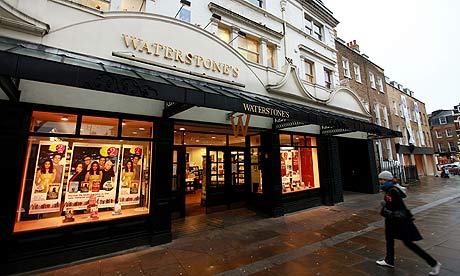2017: the Year of Unbranding?
The Guardian reports that the large UK bookstore chain Waterstones has opened three small branches without the chain’s branding. The three stores are individually named—Southwold Books, Harpenden Books, and The Rye Bookshop—located in small towns that previously lacked a bookstore, and have a smaller footprint than the typical branded store.

Waterstones managing director told The Guardian that the intention in removing the Waterstones brand was not to give the impression of an independent bookstore, but to manage expectations for the size of the shop, since a typical Waterstones is three or four times larger than the three new stores. Nonetheless, residents of one town where the bookstores are located told The Guardian that there would have been uproar if the shop had appeared with the chain’s branding.
Bookstores are an area much like food, where many consumers retain a romantic attachment to small, independent, local providers even while their budget may drive them to shop at a chain. Food brands, especially retailers, may therefore want to keep an eye on the Waterstones experiment to see what they can learn.
Major grocers in the U.S. have experimented with smaller concepts, such as the Walmart Neighborhood Market and 365 by Whole Foods. In these cases, of course, the connection to the larger brand is quite explicit. In foodservice, brands have typically taken the same approach when diversifying their concepts, such as in Starbucks’ answer to specialty coffee, Starbucks Reserve.

Yet if the Waterstones experiment proves successful, grocery and foodservice chains will begin to consider the unbranding approach. Though Americans love familiar brands, major grocery chains can be controversial when they come to small communities, and it’s important to many consumers to patronize local restaurants and coffee shops. In certain communities, unbranded outlets—tailored to the particular community, like the Waterstones shops—may avoid controversy and encourage customer loyalty.
Such an approach will be more complex than merely opening another branch of the established brand, and brand managers may worry about confusion or lost opportunities to build equity. However, with consumers increasingly going local, the unbranding strategy is worth considering—not in order to deceive consumers, but to get past the barriers that high-profile brands can throw up in certain communities. One might also consider unbranding as a strategy to create new brand equity. Unbranded outlets could serve as test brands that might be expanded within a region, much as chains already test certain types of outlets with soft launches.
Of course, launching a whole range of miniature “unbrands” will require some serious dedication to market research (understanding the particular communities where the unbrands launch) as well as the creative skills to build out materials for each individual branch. MarketPlace can help, with food industry expertise in actionable market research and integrated branding. Want to talk over whether unbranding might work for you? Send us a message or give us a call, and let’s consider whether 2017 might be the year you go local.
Starbucks Reserve image by Jeff Wilcox. Used with permission.
